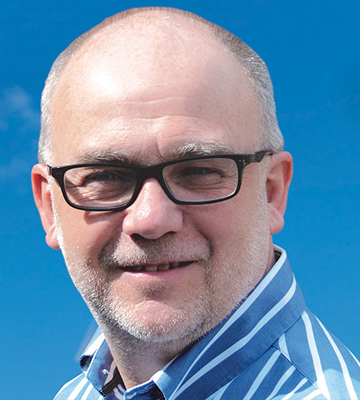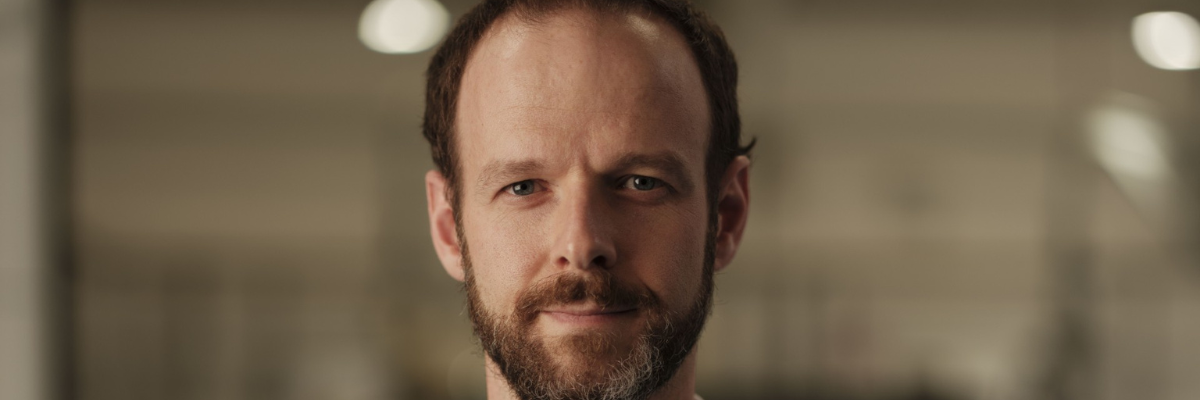Williams Jet Tenders was the winner last year of the Boat Builder Awards Sustainability Project category. This UK-based boat builder manufactures 1000 tenders a year and employs 135 staff. It has a comprehensive and fully integrated sustainability programme that would be the envy of much larger businesses. Having picked off some of the easier wins to enable its drive towards greater sustainability, the company is now using new product development with its latest superyacht focused range of tenders to spearhead new technologies in order to take the next steps towards improvement.
We caught up with Operations Director Dan Bloice-Smith, who coincidentally was named as our Boat Builder Awards Rising Star in 2018, to learn more about the company’s efforts to reduce environmental impact.
What motivates the company to make such a comprehensive effort on sustainability?
Our motivation is multifaceted.
There’s impetus from the owners of Williams Jet Tenders, and I guess from those of us that have been involved in business for a long time. We want to design and develop products with a positive legacy. We’re very aware that our products allow people to access some of the most beautiful and untouched parts of the world. Quite often our customers will moor their yacht up in a bay and then use their tender to explore secluded areas. There was a sense that we wanted to ensure our products were leaving as little wake and other impacts as possible as they came into those environments.
We take in new information daily about how to make our manufacturing centre as clean as possible. And then there’s an element of customer desire for us to be sustainable too. So many motivators.
Part of our mantra has been that we’re not going to get this perfect – it’s a journey. We believe it is better to try things, show willingness and be bold and present because, hopefully, commercially it makes sense and because it encourages others in the marketplace to think about their own sustainability approaches.
Are your customers asking detailed questions about the kind of sustainability initiatives you are running?
No, but there is a very clear requirement from our customers to have more sustainable products and a lot of misunderstanding out there about what represents and authentic improvement. A key reason why we’ve started key initiatives, such as providing a Life Cycle Assessment (LCA) for a boat, has been to try to educate by putting some facts behind what comprises a more sustainable product.
You have many different moving parts to your sustainability programme – how do you plan priorities for improvement?
In the early stages we were looking for the low hanging fruit. What could we do quickly? What was possible?
Today new product development is helping to shape our sustainability advances. Since winning the Boat Builder Awards Sustainability Project category last year Williams Jet Tenders has launched a sub brand of tenders named Evene, focused on the superyacht market. That’s enabled us to test and incorporate a lot of sustainable new technology.
We want to look at as many possible technologies and have as many conversations as possible and have created something that we’re calling the Evene criteria. It defines required characteristics to include new technology in this range. The product needs to reduce the carbon footprint by a specific amount but still work well for the customer. It needs to not increase the weight of the tender, because operationally weight increase is more carbon. It must be ethically sourced, because just looking at CO2 doesn’t give you the full picture. We also consider what we term the green premium – how much additional expense is manageable for the finished boat. Due to this work Evene is becoming our new Northern Star for progress in sustainability.
Are you excited by what you are seeing with development in new sustainable technologies and practices?
It’s a mixed answer. Quite a lot of technology changes have long timelines but there are always things that we can be working on and improving. So, in a broader sense, it is exciting, because you realise there are potential materials and products we can adopt to reduce environmental impact. It’s also encouraging for me to know that the changes we are making at Williams Jet Tenders are not solely from a central impetus; I see people right across the business making decisions which are more sustainable.
But we do need more technological breakthroughs. Particularly around drivetrains in terms of electrification and sustainable fuels. It would also be great to see progress on the recycling of glass fibre and treatment of end-of-life boats.
The Boat Builder Award judges praised your relatively adoption of LCAs for some of your models ahead of much of the market – what assistance did you have and how has that programme progressed?
We were fortunate to link up with
MarineShift360 in the beta stages of its life cyle assessment tool and became heavily involved with them as they developed that software. So that has become the basis for us. For a business of our size, we found that helpful and supplement that with consulting.
We collate and input data into MarineShift360 data. The consultancy activity helps ensure we are categorising correctly. Williams Jet Tenders currently has one petrol and one diesel-powered tender with an LCA and both new Evene models also have a full LCA – so four boats in total currently. We’ve committed to providing LCAs for all the Evene models and then use the collected data to influence every product we build.
You’ve been testing HVO fuels – what has been your experience so far?
We have a 6000lt bunded tank for HVO at Williams Jet Tenders and successfully use it for our boat testing and fleet vehicles. We’ve worked with Yanmar Marine on this project, and I think sustainable fuels are a sensible next step.
One key thing to be mindful of though is not just getting supply of HVO but also where it is being sourced from. You need a supplier that is completely truthful and honest about what’s ending up in that HVO. If palm oil is present in your HVO, then it’s gone wrong. But if the HVO is based on cooking oil, then our calculations suggest a 60% reduction in carbon footprint at use, which is significant.
There is a lot of work going into e-fuels (made by combining carbon dioxide with green hydrogen) that I think could be interesting in the future. For the size and type of boat we build electrification is difficult (with today’s generation of relatively low density energy storage) – it’s the worst scenario trying to push through a dense medium at a bad duty cycle.
If you dare to look forward 10 years, what sustainability initiatives do you think will be influential?
There is no silver bullet for sustainability. Future answers will be more nuanced and come from trying a lot of things – some of them will stick and some will fail. There are many different factors to consider.
Our work with LCAs highlights the low utilisation of many leisure boats, so developments around shared ownership and different models of ownership are very interesting. They offer the prospect of getting more people out on the water enjoying using boats while at the same time reducing impact.
In terms of product (and as a mechanical engineer by trade), I’m interested in efforts around hull dynamics and making boats more efficient. We’re currently working quite closely with
Petestep on how we can make our hulls more dynamic. The emergence of foiling boats in the leisure sector is fascinating as well. It’s possibly the only way that electrification really works to reduce impact.
Looking at business perspectives, the general consensus of many leading CEOs at the recent
IBI Summit was that we need to be more collaborative and use our collective resources more efficiently. Certainly, we’re experiencing that as a business already where we are becoming more professional – which for us means being more resource efficient. We’re all working within a small industry, so collaboration is essential.
More information
Read
Williams Jet Tenders 2025 Annual Sustainability Report here.
The 2025 IBI Metstrade Boat Builder Awards for Business Achievement, held in association with foundation partner Raymarine, will celebrate its 11th edition with a completely new format of awards dinner on 19 November 2025, co-located alongside Metstrade in a vibrant new event space within the RAI exhibition complex. Entries of the six categories are still open until 3 October 2025. See
ibinews.com/bba2025 for more information.
 Kim Hollamby
Kim Hollamby